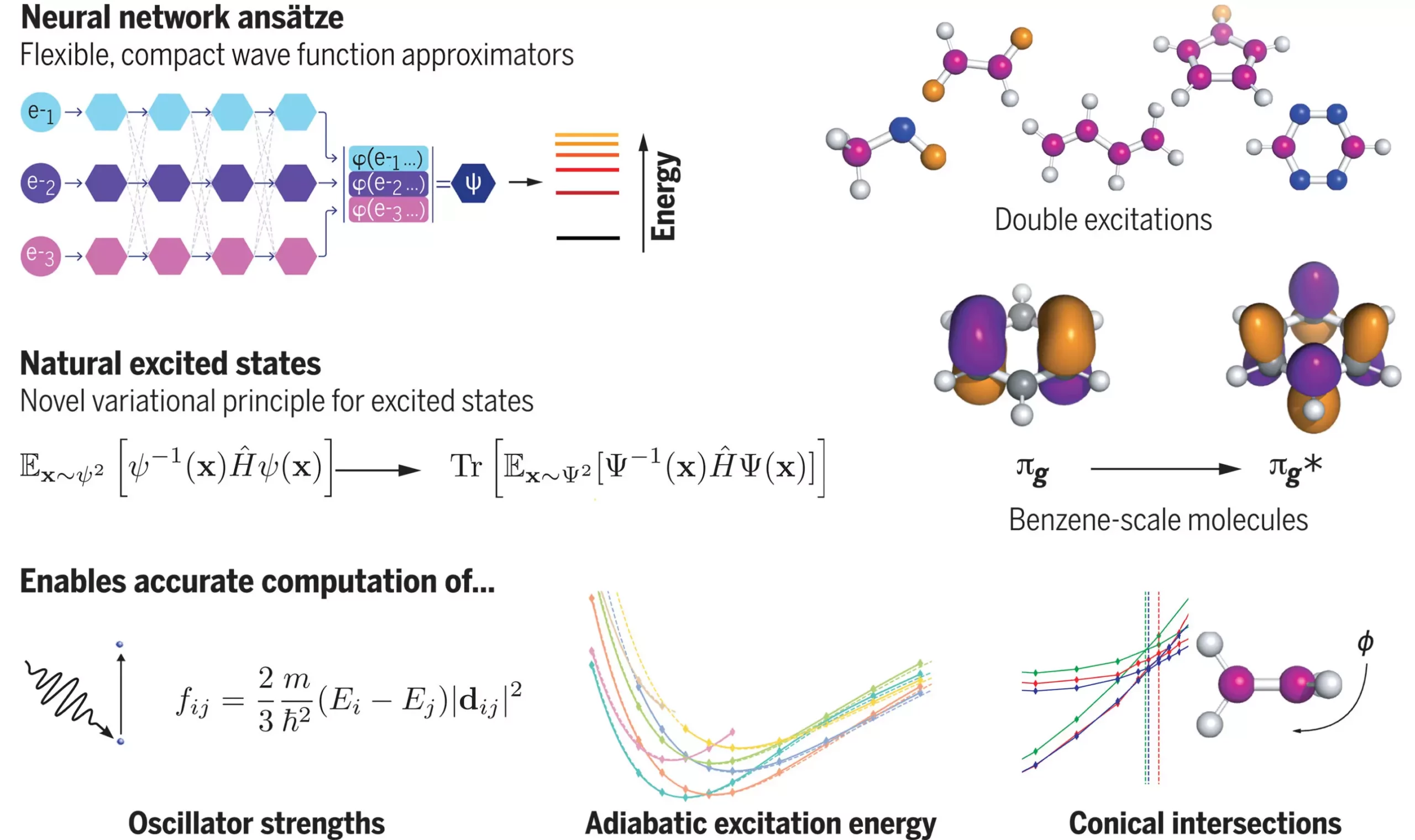Recent research utilizing neural networks, a form of artificial intelligence inspired by the human brain, has provided a groundbreaking solution to the complex task of modeling the states of molecules. This research offers invaluable insights into the transitions of molecules to and from excited states, which could have profound implications for various industries, including materials science and chemistry.
When molecules and materials are exposed to high energy levels, such as light or heat, their electrons can enter temporary excited states. The process of transitioning between these states involves absorbing and releasing specific amounts of energy, resulting in a unique fingerprint for each molecule or material. This fingerprint is crucial for the performance of technologies like solar panels, LEDs, and even biological processes like photosynthesis and vision.
Lead researcher Dr. David Pfau, from Google DeepMind and Imperial College London, highlights the immense challenge of representing the state of quantum systems due to the probabilistic nature of electron positions within molecules. Traditional methods fall short in capturing the vast space of possible configurations, making it nearly impossible to accurately model excited states. This is where neural networks come into play.
The research team introduced a new mathematical approach coupled with a neural network known as FermiNet (Fermionic Neural Network). This groundbreaking model was the first of its kind to accurately compute the energy of atoms and molecules from fundamental principles. Through rigorous testing on complex molecules like the carbon dimer, the team achieved impressive results, with mean absolute errors as low as 4 meV, significantly closer to experimental benchmarks than previous methods.
The implications of this research are far-reaching, with the potential to revolutionize the field of computational chemistry. By leveraging neural networks and advanced mathematical models, researchers can now simulate and predict the behavior of molecules with unprecedented accuracy. This could lead to the development of new materials, chemical syntheses, and technologies, all optimized through computer simulations before experimental validation.
The integration of neural networks in modeling molecular states represents a significant advancement in the field of chemistry and materials science. The ability to accurately predict the behavior of molecules in excited states opens up a world of possibilities for researchers and industries alike. With continued advancements in AI and computational techniques, we may witness groundbreaking discoveries and innovations in the near future.


Leave a Reply